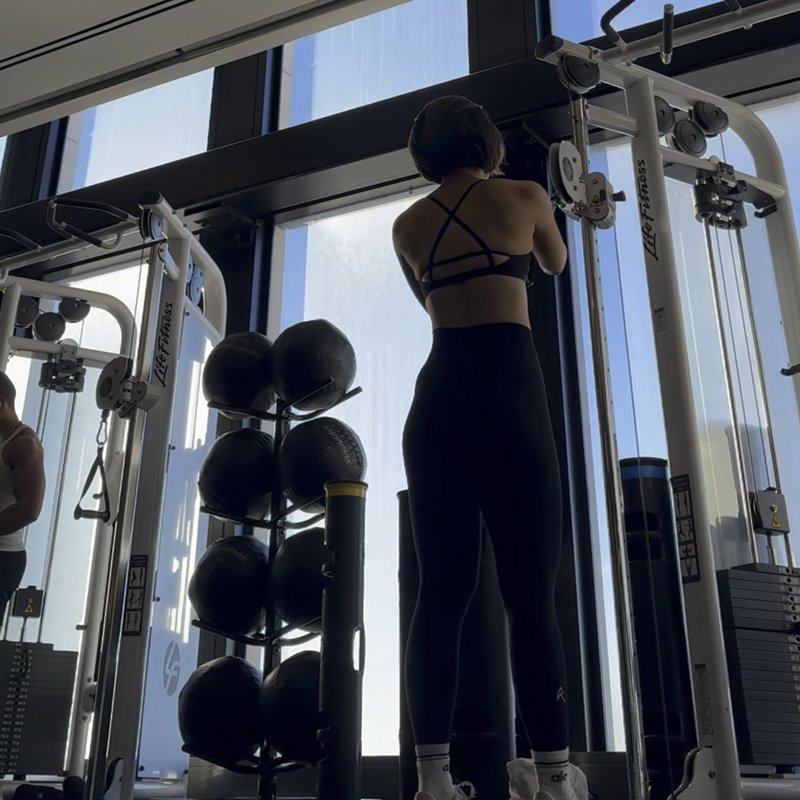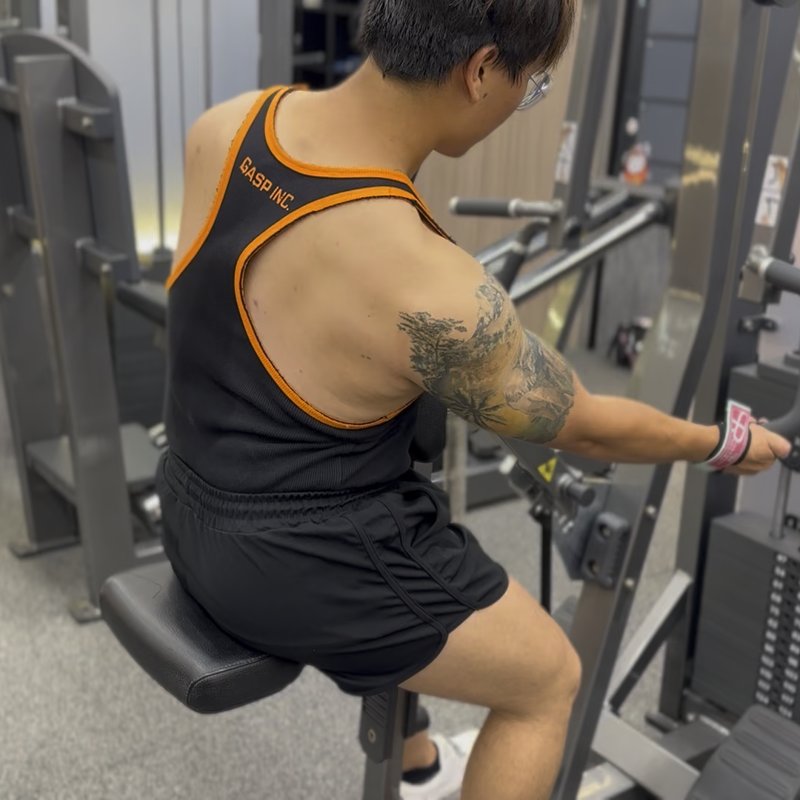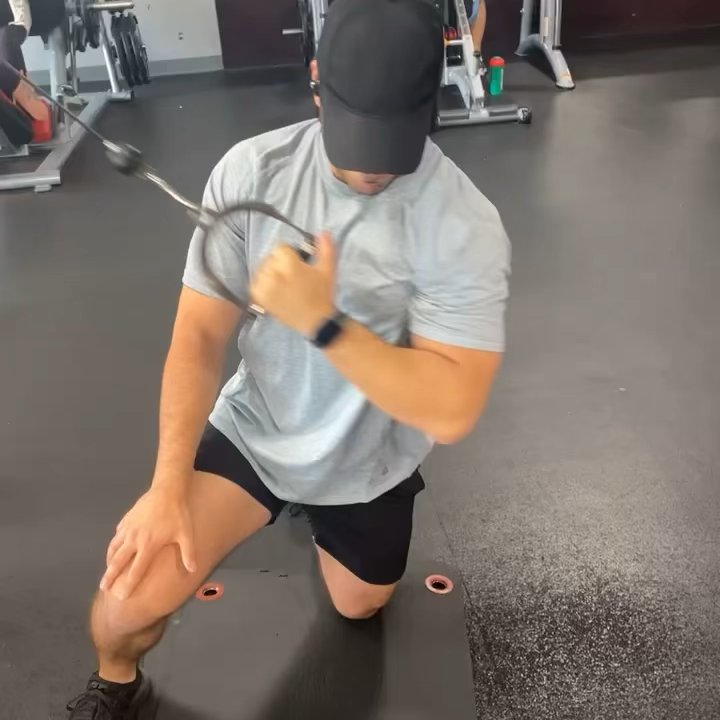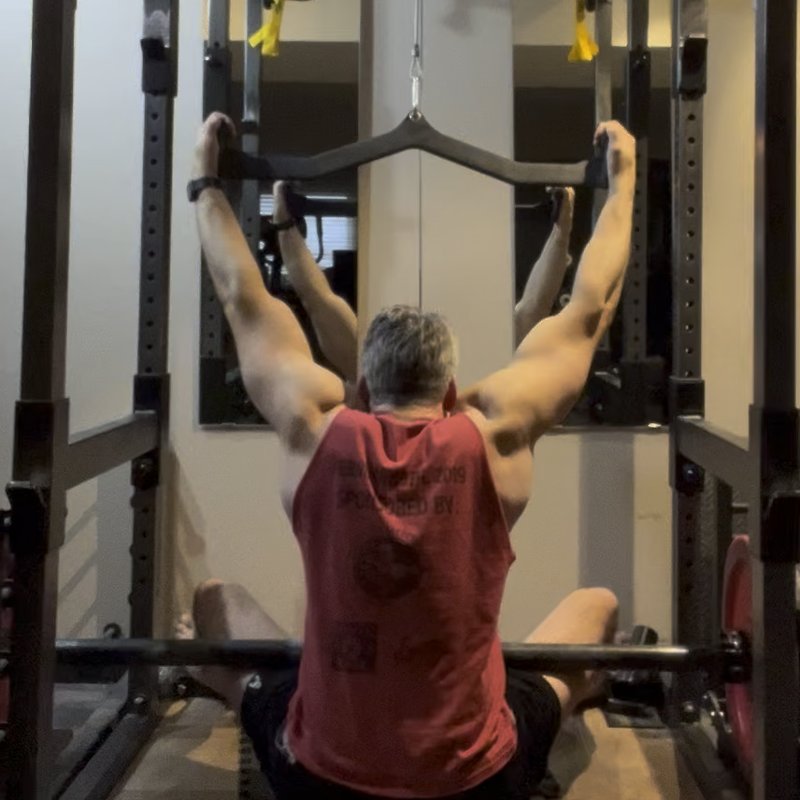Weighted Pull-Up: The Ultimate Guide
The Weighted Pull-Up is an advanced variation of the traditional pull-up that adds external resistance to increase the intensity, targeting the back, biceps, and core muscles while building exceptional upper body strength and muscle development.
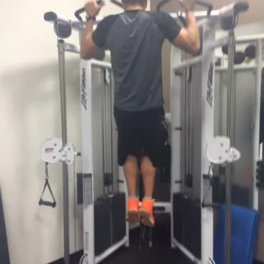
Quick Facts
Key Benefit
Advanced back strength and muscle development
Primary Muscles
Biceps, Lats, Rhomboids, Traps
Secondary Muscles
Abdominals, Forearms, Posterior Deltoids, Rotator Cuff
Equipment
pull-up bar
Difficulty
Advanced
Type
Strength
In This Guide
Ready to master the Weighted Pull-Up?
Track your progress, see improvements over time, and build strength consistently.
Download GravitusThe Weighted Pull-Up is one of the most effective exercises for developing upper body pulling strength and back musculature. By adding external resistance to the traditional pull-up, this exercise takes an already challenging movement and elevates it to a new level of intensity. While bodyweight pull-ups are excellent for beginners and intermediate trainees, progressive overload—the principle of gradually increasing resistance—is essential for continued strength and muscle development. The weighted pull-up allows advanced lifters to apply this principle to one of the most fundamental upper body pulling movements. What makes the weighted pull-up particularly valuable is its comprehensive engagement of the entire posterior chain. From the large latissimus dorsi muscles of the back to the biceps, forearms, and even the core stabilizers, few exercises deliver such complete upper body development in a single movement. Whether your goal is to build a wider, thicker back, increase functional pulling strength, or simply progress beyond bodyweight calisthenics, the weighted pull-up deserves a place in your training program. This guide will cover everything you need to know to perform this exercise safely and effectively for maximum results.
Benefits of Weighted Pull-Ups
Adding external resistance to pull-ups provides several distinct advantages over standard bodyweight variations.
Progressive Overload
Allows for continual strength progression beyond what bodyweight alone can provide, essential for long-term muscle and strength gains.
Back Thickness
Functional Strength
Grip Development
Efficient Training
Proper Form & Technique
Setup
- Select your resistance method—typically a dip belt with weight plates, a weighted vest, or a dumbbell held between the feet.
- For a dip belt, secure it around your waist and attach the desired weight through the chain.
- Position yourself under a sturdy pull-up bar that allows full extension of your arms without your feet touching the ground.
- Grip the bar with hands slightly wider than shoulder-width apart using an overhand grip (palms facing away from you).
- Allow your body to hang completely with arms fully extended, shoulders active (not completely relaxed), and core engaged.
- Cross your ankles behind you if using a dip belt or dumbbell to stabilize the weight.
Movement
- Initiate the movement by pulling your shoulder blades down and back (scapular retraction).
- Pull your body upward by driving your elbows down toward your sides, maintaining a relatively straight vertical path.
- Focus on using your back muscles rather than relying primarily on arm strength.
- Continue pulling until your chin clears the bar, or ideally, until the bar reaches upper chest level for a full range of motion.
- Pause briefly at the top position, focusing on squeezing your back muscles.
- Lower yourself with control back to the starting position, allowing your arms to fully extend without completely relaxing your shoulders.
- Repeat for the desired number of repetitions, maintaining proper form throughout.
Key Form Tips
Shoulder Position
Keep your shoulders down and away from your ears throughout the movement to properly engage the lats.
Core Engagement
Maintain a tight core and slight posterior pelvic tilt to prevent excessive swinging or arching.
Breathing
Exhale during the pulling phase and inhale during the lowering phase to optimize performance and core stability.
Controlled Descent
Resist the temptation to drop quickly—the eccentric (lowering) portion is valuable for muscle development.
Weight Selection
Choose a resistance that allows you to perform at least 5 clean repetitions with proper form.
Muscles Worked
Primary Muscles
- lats: The large, fan-shaped muscles of the mid-back are the primary movers, responsible for the shoulder adduction and extension that pulls your body upward.
- rhomboids: Located between the shoulder blades, these muscles retract the scapulae and are heavily engaged during the upper portion of the pull-up.
- traps: Particularly the middle and lower fibers, which assist in scapular retraction and depression during the movement.
- biceps: The primary elbow flexors, they work as synergists to bend the arm during the pulling motion.
Secondary Muscles
- posterior deltoids: The posterior shoulder muscles assist in shoulder extension during the pull-up motion.
- forearms: Both the flexors and extensors of the forearm are heavily engaged to maintain grip on the bar.
- rotator cuff: Works alongside the latissimus dorsi in shoulder adduction and internal rotation.
- abdominals: The abdominals and obliques work isometrically to stabilize the body and prevent swinging, especially with added weight.
Common Mistakes and How to Fix Them
Excessive Weight
Using too much resistance leads to compromised form and reduced range of motion. Start conservatively and progress gradually, ensuring you can perform at least 5 clean repetitions before increasing weight.
Kipping or Swinging
Using momentum to complete repetitions reduces muscle engagement and increases injury risk. Focus on controlled movement, engage your core, and consider reducing weight if you can't perform the exercise strictly.
Incomplete Range of Motion
Not lowering to full arm extension or failing to pull high enough reduces effectiveness. Ensure you start each repetition from a dead hang position and pull until your chin clears the bar.
Leading with the Chin
Jutting the head forward to reach the bar rather than pulling the body up properly. Focus on keeping your neck in a neutral position and pulling your chest toward the bar instead.
Improper Breathing
Holding your breath or breathing erratically can limit performance and core stability. Establish a rhythmic breathing pattern—generally exhaling during the pull and inhaling during the descent.
Weighted Pull-Up Variations
Grip Variations
-

Weighted Chin-Up
Using an underhand grip (palms facing you) to increase biceps involvement and slightly alter the lat engagement pattern.
-
Weighted Neutral Grip Pull-Up
Utilizing parallel handles with palms facing each other for a more shoulder-friendly pulling variation.
-

Weighted Wide Grip Pull-Up
Taking a grip significantly wider than shoulder width to emphasize lat width and reduce biceps involvement.
Advanced Variations
-

Weighted Archer Pull-Up
Performing the pull-up with one arm fully extended to the side and the other pulling, creating an asymmetrical challenge that builds toward one-arm pull-ups.
-

Weighted L-Sit Pull-Up
Maintaining an L position with legs extended forward parallel to the ground throughout the movement, significantly increasing core demands.
-

Weighted Towel Pull-Up
Hanging from towels draped over the bar to dramatically increase grip and forearm demands while performing weighted pull-ups.
Frequently Asked Questions
The appropriate number depends entirely on the weight used and your training goals. For strength development, even 3-5 repetitions with challenging weight can be highly effective. For muscle building, 6-12 repetitions with moderate weight often works well. Rather than focusing on a specific rep target, concentrate on progressive overload - gradually increasing either reps or weight over time. A common benchmark for advanced trainees is performing pull-ups with an added 45-pound plate for 5-8 clean repetitions, but individual goals and body proportions will influence what's appropriate for your specific situation.
Both have advantages, but dip belts are generally preferred for progressive weighted pull-ups. Dip belts allow for much heavier loading than most commercial weighted vests, making them better for long-term progression. They also position the weight directly below your center of gravity, creating a more natural pulling pattern. Weighted vests distribute weight more evenly around your torso, which can be more comfortable for some people and provide additional core challenges. For optimal results, a dip belt is recommended for primary strength work, while a weighted vest might be used for higher-rep endurance work or as a variation.
For most trainees, training weighted pull-ups 2-3 times per week provides sufficient stimulus for progress while allowing adequate recovery. If you're following a specialized pull-up program, you might train them directly 3-4 times weekly with carefully managed volume and intensity. Alternatively, you could train heavy weighted pull-ups just once weekly if they're supplementing other back training. Recovery needs increase with training advancement - beginners to weighted pull-ups might recover quickly, while those using substantial added weight may need 72+ hours between sessions. Listen to your body and adjust frequency based on your recovery capacity and progress.
Typically, weighted pull-ups should be performed early in your workout when your energy and strength levels are highest, especially if you're using challenging loads. As a compound movement that requires significant neural drive and coordination, weighted pull-ups generally yield better results when performed fresh. If your primary goal is to build pull-up strength, do them first in your workout. If they're a supplementary exercise within a broader back program, you might place them second after an even more demanding compound movement like heavy deadlift variations. Avoid performing them after pre-exhausting the lats or grip with multiple other exercises.
Video Demonstrations
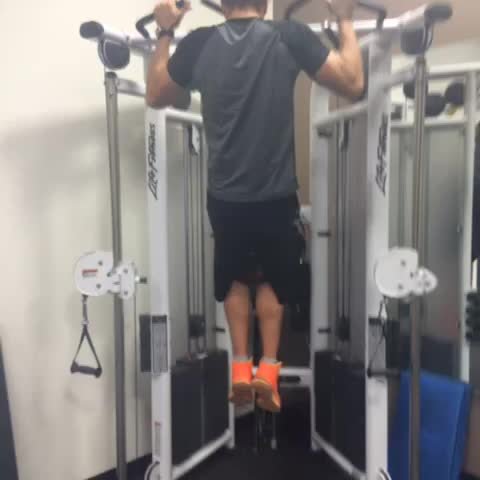
Log in to watch video demonstrations
Login to Watch3 video demonstrations available
Find more video demonstrations in the Gravitus app
Tips from the Community
-

Keep your core tight. Inhale at the bottom of the movement and exhale at the top. Also focus on relaxing your biceps for maximum back contraction.
-

Kiki onll no lil
-

Iko mik Ki
Track your progress with Gravitus
Download Gravitus to log your workouts, track your progress, and join a community of fitness enthusiasts.

Helpful Resources
One Rep Max Calculator
Find your one rep max for any exercise without maximal testing. Essential for developing effective strength training programs.
Calculate 1RMWorkout Programs
Follow structured workout programs created by fitness professionals to maximize your strength and muscle gains.
View Programs
